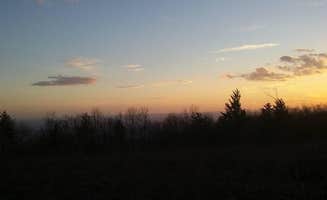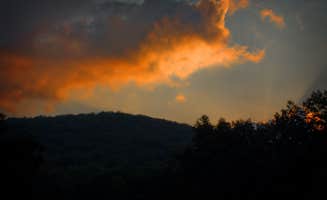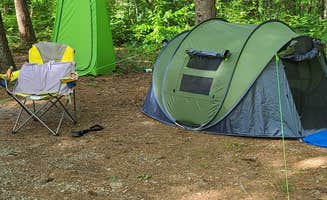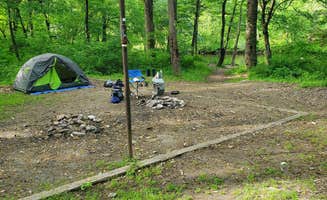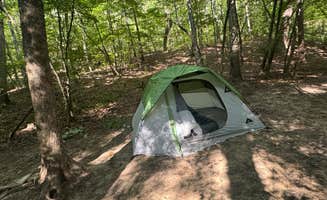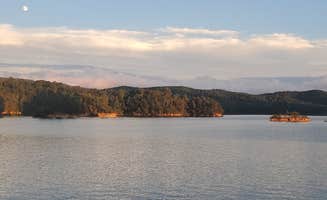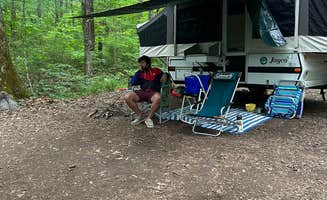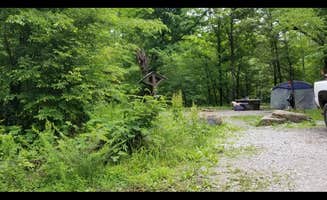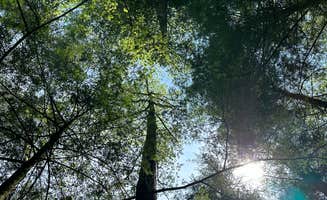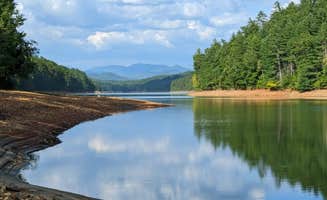Dispersed camping near Chatsworth, Georgia centers around the Cohutta Wilderness Area, which encompasses over 40,000 acres within the larger Chattahoochee National Forest. The area features elevations ranging from 950 to 4,200 feet, creating diverse ecosystems and significant temperature variations between ridge tops and river valleys. Most primitive camping options can be accessed from Forest Service Road 64, though recent flooding has affected some access points and creek crossings.
What to do
Fishing opportunities: The Conasauga River offers clear waters suitable for fishing and wading. At Conasauga River Camp, campers find "a very swimmable and warm crystal clear river - very popular with locals, and I imagine would be packed on weekends," according to one visitor.
Photography excursions: The Ball Field area provides exceptional stargazing opportunities for night sky photographers. A camper at Ball Field Dispersed Camping Area noted it's "one of my favorite types of spots: remote, little light pollution, and deep in the mountains... Go here on a new moon night in the summer and you're sure to have a great night of uninterrupted beauty!"
Wildlife watching: The Cohutta Wilderness supports diverse wildlife including bears, deer, and various bird species. Visitors should maintain awareness of their surroundings. One camper at Big Creek mentioned, "We did not see any bears in camp, but did spot one just down the road the morning we were leaving."
Creek exploration: Many camping areas feature adjacent creeks suitable for cooling off. At Hidden Creek Campground, campers can find secluded spots, though one visitor warns there are "a few substantial pot holes, so wouldn't recommend for someone driving a super low vehicle."
What campers like
Remote solitude: The distance from urban areas creates a genuine wilderness experience. A visitor to Lost Creek Campground described it as "incredibly clean + quiet—and completely free. It's in the middle of nowhere (7 miles down a gravel forest road), surrounded by forest, with easy creek access."
Natural water features: Many sites offer direct creek or river access. At Jack's River Falls Trail, one camper recommended you "fall asleep to the rushing waters of Jack's River!" Another mentioned there are "a few campsites right next to the river. A cool 9ish mile to the falls or go snorkeling in clear creek waters."
Group accommodations: Several areas accommodate larger camping parties. The Ball Field area features "multiple fire rings established around the field and this field can handle many groups," according to one camper, who added "The field is fairly sloped, so you want to have some shoring if you are in a trailer, roof top tent, or van."
Trail access: Proximity to hiking trails allows for day hikes from camp. At SongBird Trail Camp, one regular visitor noted, "This area will speak for itself once you arrive. It's very peaceful and calming, beautiful hikes, pretty nature, and great memories!"
What you should know
Bear safety protocols: Bears are active throughout the Cohutta region. At Big Creek Primitive Camping Area, one camper advised "you need to practice bear safety with your food and trash. We did not see any bears in camp, but did spot one just down the road the morning we were leaving."
Road conditions: Access roads are often unpaved and may become challenging after rain. One Ball Field camper noted, "This area is fairly remote and the rough gravel forest service roads are best traveled by a higher clearance vehicle. 2x2 usually works ok though."
Water availability: Bring sufficient water or purification equipment. A camper at Lost Creek noted, "There is no potable water available from a spicket and no Verizon cell reception."
Seasonal considerations: The area can be significantly less crowded on weekdays. A Conasauga River visitor mentioned their spot "gets picked up during the fall a lot but best dispersed site I've found in a while."
Tips for camping with families
Trail difficulty assessment: Some wilderness trails can be challenging for younger children. A visitor to Jack's River Falls Trail recommended it as "a tough trail but good for teens looking to challenge themselves in the back country. The views are amazing with rock falls."
Creek activities: Shallow creek areas provide natural play spaces. At Lost Creek, a camper mentioned, "The creek can be used for shallow water wading or fishing."
Site selection strategy: Arrive early on weekends to secure family-friendly spots. One camper at Creekside Camp noted there are "flat campsites next to a very nice creek" that work well for families with tents.
Group sites: For family reunions or larger gatherings, seek designated group areas. As one Ball Field camper explained, "We got to the group site at 1:20 or so and there was only one person at first but slowly people start trickling in. We stayed 2 nights but a lot of people stayed for 1."
Tips from RVers
Size limitations: Most dispersed sites can accommodate small trailers but not large RVs. At Murrays Lake Primitive, a camper reported, "There are 2 drive in tent spots, with 2 more at the end of a trail. The road in can be handled by a sedan."
Leveling requirements: Prepare for uneven terrain at most sites. A Ball Field visitor noted, "The field is fairly sloped, so you want to have some shoring if you are in a trailer, roof top tent, or van."
Access road challenges: Forest service roads may have potholes and rough sections. A Hidden Creek camper warned about "LOTS OF DEEP POTHOLES" and noted "Our truck is pretty high and 4x4 so wasn't too bad for us but a low car may not fair as well."


